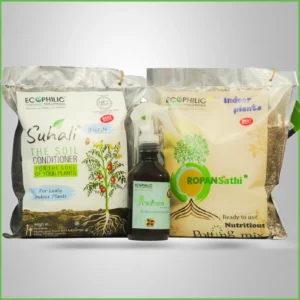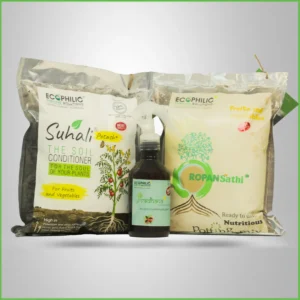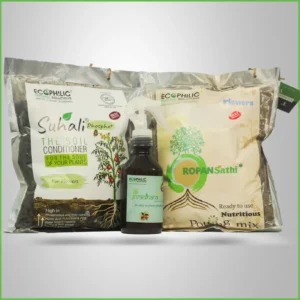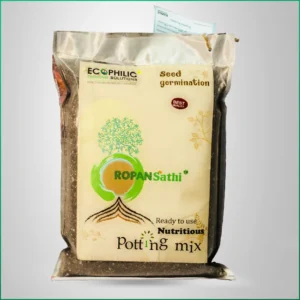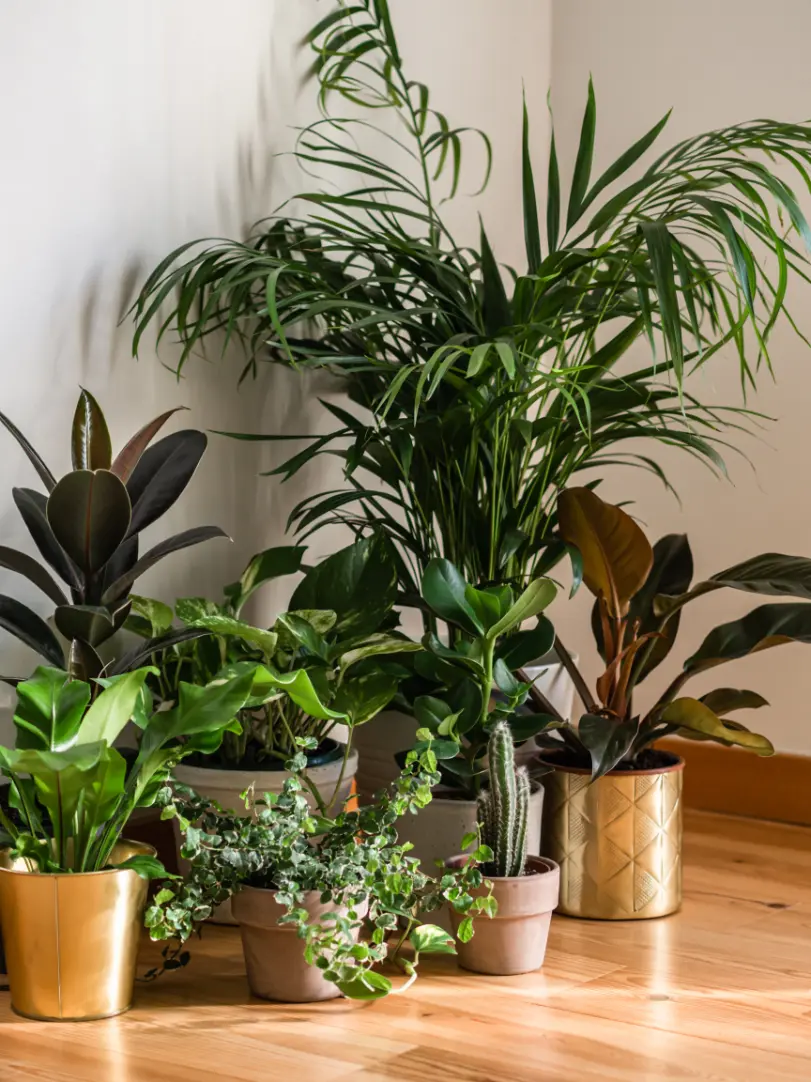Indoor plants bring a touch of nature’s beauty and serenity into our living spaces, enriching the aesthetic value of our homes. Their lush green foliage, vibrant flowers, and unique shapes add visual appeal, creating a harmonious and inviting atmosphere. The organic forms and soothing colours of indoor plants enhance the overall decor, creating a sense of tranquillity and well-being. These living artworks not only complement various design styles but also connect us to the natural world, providing a breath of fresh air in our urban environments.
Moreover, caring for indoor plants encourages mindfulness. It fosters a sense of responsibility, deepening our connection to the living, growing elements in our homes. Indoor plants aren’t just decorations; they are a testament to the aesthetic beauty and vitality that nature brings to our indoor spaces.
Indoor plants add a touch of natural beauty to your home and offer several health and well-being benefits, including improved air quality. Here are some popular indoor plants and tips for their maintenance:
Snake Plant (Sansevieria):
Maintenance: Snake plants are very low maintenance. Water sparingly, allowing the soil to dry out between waterings. They can thrive in low light conditions.
Benefits: They purify the air by removing toxins and are known for their ability to convert carbon dioxide into oxygen at night.
Propagation: Cut a healthy leaf into sections and plant them in soil. They will develop roots and grow into new plants.
Pothos (Epipremnum aureum):
Maintenance: Pothos is an easy-to-care-for plant. Water it when the soil is dry, and it can tolerate low light conditions.
Benefits: Pothos helps purify the air and is an excellent choice for beginners.
Propagation: Cut a stem just below a leaf node, remove the lower leaves, and place it in water until roots form. Then, transfer it to soil.
Aloe Vera (Aloe barbadensis miller):
Maintenance: Allow the soil to dry between waterings. Place it in bright, indirect sunlight.
Benefits: Aloe vera has soothing gel that can be used for skin conditions, and it helps improve indoor air quality.
Propagation:Aloe vera plants produce pups at the base, which can be carefully removed and potted separately.
ZZ Plant (Zamioculcas zamiifolia):
Maintenance: ZZ plants are drought-tolerant and can survive in low light. Water sparingly.
Benefits: They are great for improving air quality and require minimal care.
Propagation: You can propagate ZZ plants by taking leaf cuttings. Cut a leaf into sections, making sure each section has a portion of the stem. Allow the cuttings to air dry for a few days to form a callus, then plant them in a well-draining potting mix. Water sparingly until they root.
Rubber Plant (Ficus elastica):
Maintenance: Keep the soil moderately moist and place it in bright, indirect light.
Benefits: Rubber plants are effective air purifiers and can grow into tall, attractive houseplants.
Propagation: Rubber plants can be propagated from stem cuttings. Take a healthy stem cutting, allow it to root in water, and then transplant it into soil.
Jade Plant (Crassula ovata):
Maintenance: Water sparingly, and ensure well-draining soil. Place it in bright light.
Benefits: Jade plants are known for their symbolism of good luck and financial success.
Propagation: Jade plants can be propagated from both leaf and stem cuttings. For leaf cuttings, pluck a healthy leaf and let it air dry for a day or two to form a callus. Plant it in a well-draining soil mix. For stem cuttings, take a healthy stem, cut it into sections, and allow the cut ends to dry for a few days. Plant the dried ends in soil, and they will root and grow.
Spider Plant (Chlorophytum comosum):
Maintenance: Spider plants are resilient and thrive in indirect light. Water moderately and ensure good drainage.
Benefits: They are excellent air purifiers and can remove common indoor pollutants.
Propagation: Remove the baby spiderettes that grow on the mother plant and place them in a pot with soil to root. Spider plants also produce long runners with baby plants at the end. You can cut and pot these baby plants once they have developed roots.
Peace Lily (Spathiphyllum):
Maintenance: Keep the soil consistently moist but not soggy. Place it in low to moderate light conditions.
Benefits: Peace lilies are known for their air-purifying qualities and beautiful white blooms.
Propagation: When a peace lily becomes crowded, you can divide it by carefully separating the root ball into smaller plants and repotting them.n: When a peace lily becomes crowded, you can divide it by carefully separating the root ball into smaller plants and repotting them.
Boston Fern (Nephrolepis exaltata):
Maintenance: Keep the soil consistently moist and provide indirect light. Mist the plant to maintain humidity.
Benefits: Boston ferns are great for improving indoor air quality and adding a lush, green look to your home.
Propagation: Boston ferns can be propagated by dividing the plant. Carefully separate the root ball into smaller sections with healthy fronds and roots, and then repot each section into its own container.
Remember that while these indoor plants are relatively easy to care for, it’s essential to observe the specific requirements of each plant. Regularly inspect for pests, dust the leaves, and re-pot as needed to keep your indoor plants healthy and thriving.


